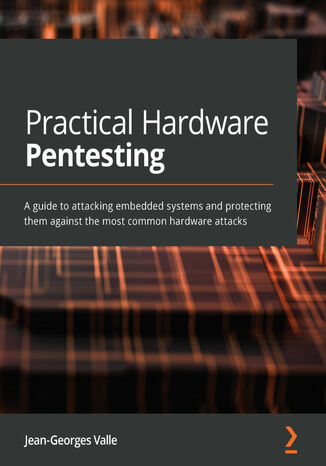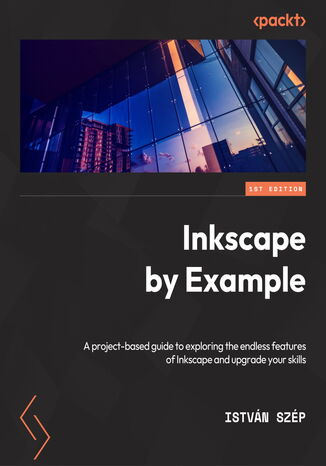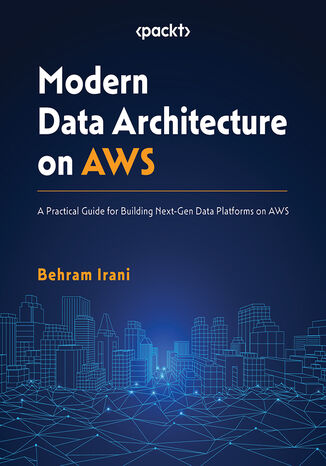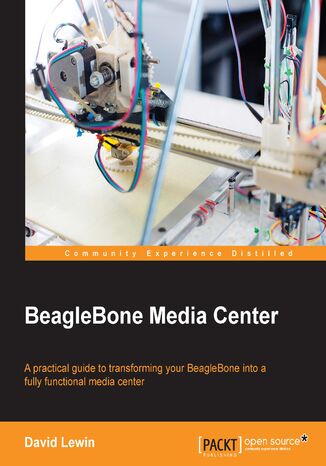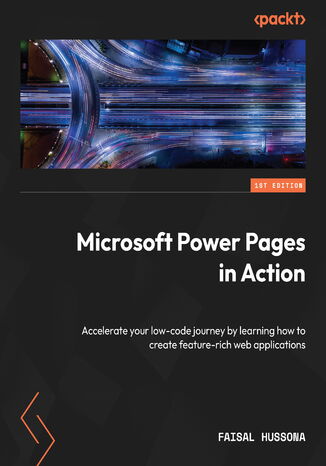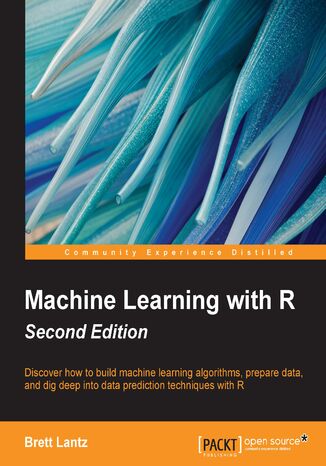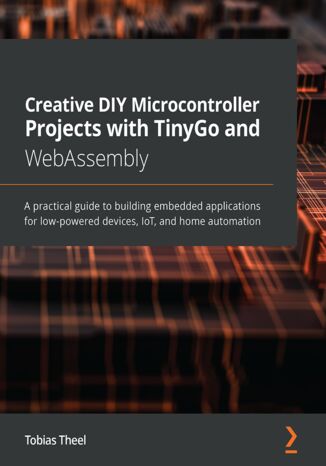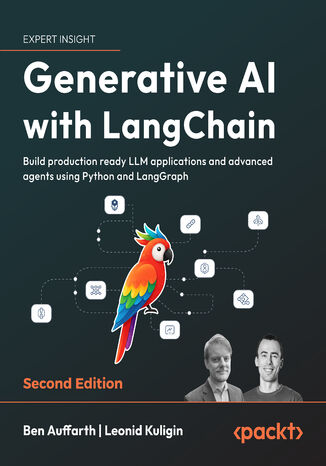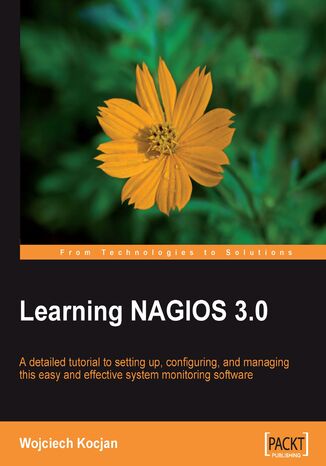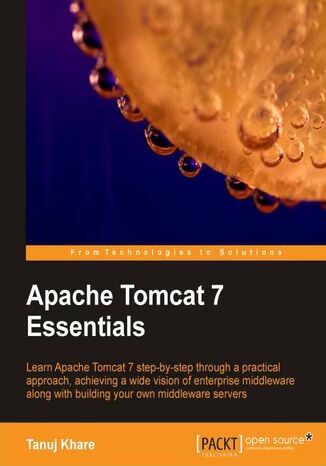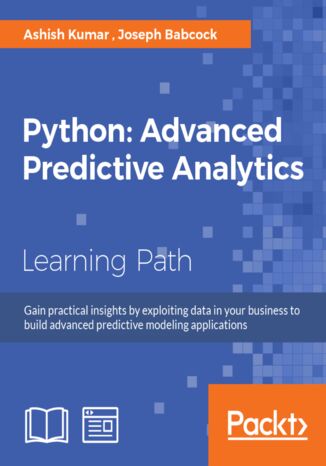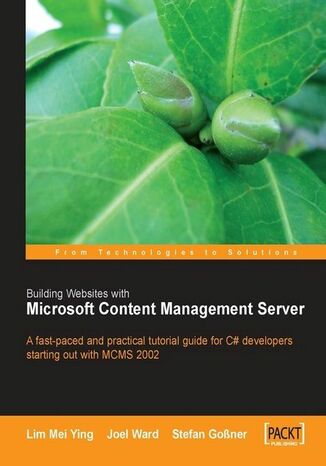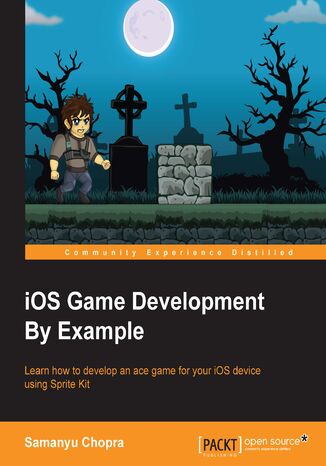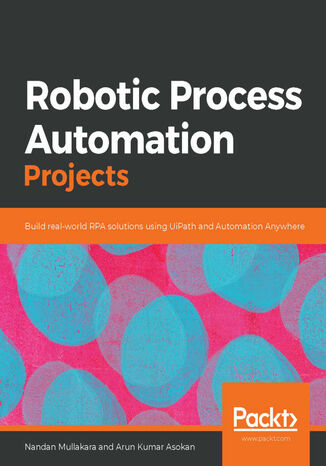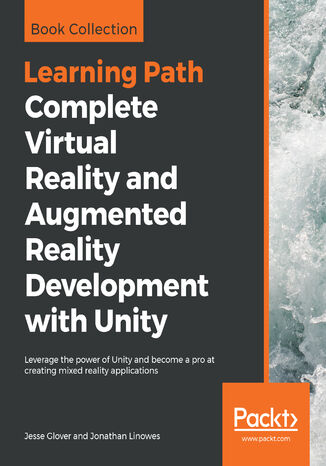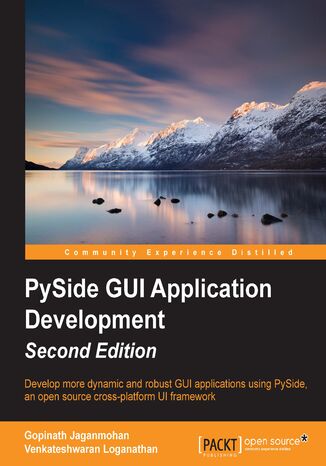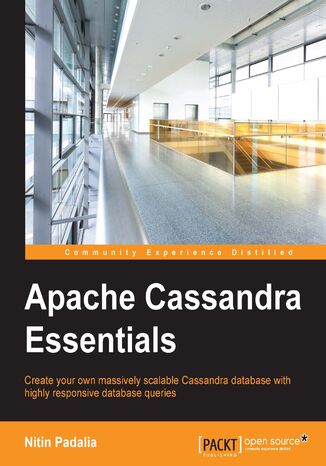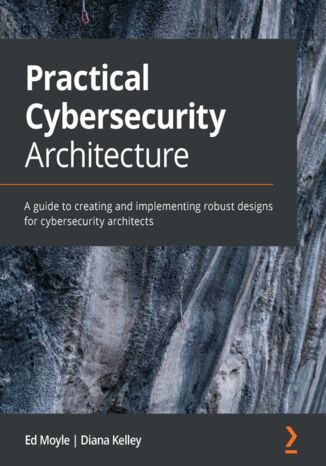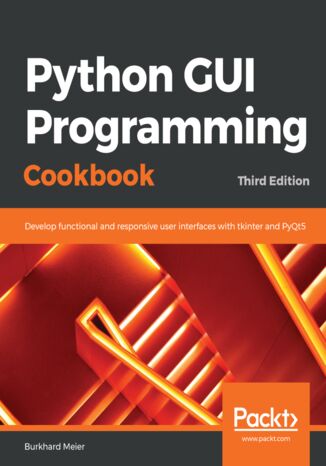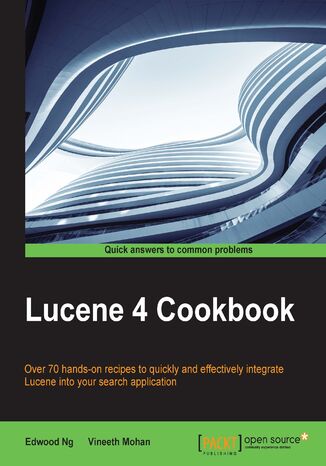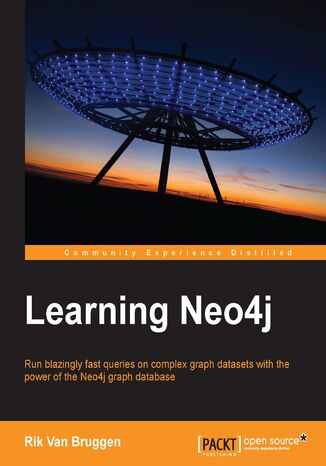Kategorie
Ebooki
-
Biznes i ekonomia
- Bitcoin
- Bizneswoman
- Coaching
- Controlling
- E-biznes
- Ekonomia
- Finanse
- Giełda i inwestycje
- Kompetencje osobiste
- Komputer w biurze
- Komunikacja i negocjacje
- Mała firma
- Marketing
- Motywacja
- Multimedialne szkolenia
- Nieruchomości
- Perswazja i NLP
- Podatki
- Polityka społeczna
- Poradniki
- Prezentacje
- Przywództwo
- Public Relation
- Raporty, analizy
- Sekret
- Social Media
- Sprzedaż
- Start-up
- Twoja kariera
- Zarządzanie
- Zarządzanie projektami
- Zasoby ludzkie (HR)
-
Dla dzieci
-
Dla młodzieży
-
Edukacja
-
Encyklopedie, słowniki
-
E-prasa
- Architektura i wnętrza
- BHP
- Biznes i Ekonomia
- Dom i ogród
- E-Biznes
- Ekonomia i finanse
- Ezoteryka
- Finanse
- Finanse osobiste
- Firma
- Fotografia
- Informatyka
- Kadry i płace
- Kobieca
- Komputery, Excel
- Księgowość
- Kultura i literatura
- Naukowe i akademickie
- Ochrona środowiska
- Opiniotwórcze
- Oświata
- Podatki
- Podróże
- Psychologia
- Religia
- Rolnictwo
- Rynek książki i prasy
- Transport i Spedycja
- Zdrowie i uroda
-
Historia
-
Informatyka
- Aplikacje biurowe
- Bazy danych
- Bioinformatyka
- Biznes IT
- CAD/CAM
- Digital Lifestyle
- DTP
- Elektronika
- Fotografia cyfrowa
- Grafika komputerowa
- Gry
- Hacking
- Hardware
- IT w ekonomii
- Pakiety naukowe
- Podręczniki szkolne
- Podstawy komputera
- Programowanie
- Programowanie mobilne
- Serwery internetowe
- Sieci komputerowe
- Start-up
- Systemy operacyjne
- Sztuczna inteligencja
- Technologia dla dzieci
- Webmasterstwo
-
Inne
-
Języki obce
-
Kultura i sztuka
-
Lektury szkolne
-
Literatura
- Antologie
- Ballada
- Biografie i autobiografie
- Dla dorosłych
- Dramat
- Dzienniki, pamiętniki, listy
- Epos, epopeja
- Esej
- Fantastyka i science-fiction
- Felietony
- Fikcja
- Humor, satyra
- Inne
- Klasyczna
- Kryminał
- Literatura faktu
- Literatura piękna
- Mity i legendy
- Nobliści
- Nowele
- Obyczajowa
- Okultyzm i magia
- Opowiadania
- Pamiętniki
- Podróże
- Poemat
- Poezja
- Polityka
- Popularnonaukowa
- Powieść
- Powieść historyczna
- Proza
- Przygodowa
- Publicystyka
- Reportaż
- Romans i literatura obyczajowa
- Sensacja
- Thriller, Horror
- Wywiady i wspomnienia
-
Nauki przyrodnicze
-
Nauki społeczne
-
Podręczniki szkolne
-
Popularnonaukowe i akademickie
- Archeologia
- Bibliotekoznawstwo
- Filmoznawstwo
- Filologia
- Filologia polska
- Filozofia
- Finanse i bankowość
- Geografia
- Gospodarka
- Handel. Gospodarka światowa
- Historia i archeologia
- Historia sztuki i architektury
- Kulturoznawstwo
- Lingwistyka
- Literaturoznawstwo
- Logistyka
- Matematyka
- Medycyna
- Nauki humanistyczne
- Pedagogika
- Pomoce naukowe
- Popularnonaukowa
- Pozostałe
- Psychologia
- Socjologia
- Teatrologia
- Teologia
- Teorie i nauki ekonomiczne
- Transport i spedycja
- Wychowanie fizyczne
- Zarządzanie i marketing
-
Poradniki
-
Poradniki do gier
-
Poradniki zawodowe i specjalistyczne
-
Prawo
- BHP
- Historia
- Kodeks drogowy. Prawo jazdy
- Nauki prawne
- Ochrona zdrowia
- Ogólne, kompendium wiedzy
- Podręczniki akademickie
- Pozostałe
- Prawo budowlane i lokalowe
- Prawo cywilne
- Prawo finansowe
- Prawo gospodarcze
- Prawo gospodarcze i handlowe
- Prawo karne
- Prawo karne. Przestępstwa karne. Kryminologia
- Prawo międzynarodowe
- Prawo międzynarodowe i zagraniczne
- Prawo ochrony zdrowia
- Prawo oświatowe
- Prawo podatkowe
- Prawo pracy i ubezpieczeń społecznych
- Prawo publiczne, konstytucyjne i administracyjne
- Prawo rodzinne i opiekuńcze
- Prawo rolne
- Prawo socjalne, prawo pracy
- Prawo Unii Europejskiej
- Przemysł
- Rolne i ochrona środowiska
- Słowniki i encyklopedie
- Zamówienia publiczne
- Zarządzanie
-
Przewodniki i podróże
- Afryka
- Albumy
- Ameryka Południowa
- Ameryka Środkowa i Północna
- Australia, Nowa Zelandia, Oceania
- Austria
- Azja
- Bałkany
- Bliski Wschód
- Bułgaria
- Chiny
- Chorwacja
- Czechy
- Dania
- Egipt
- Estonia
- Europa
- Francja
- Góry
- Grecja
- Hiszpania
- Holandia
- Islandia
- Litwa
- Łotwa
- Mapy, Plany miast, Atlasy
- Miniprzewodniki
- Niemcy
- Norwegia
- Podróże aktywne
- Polska
- Portugalia
- Pozostałe
- Przewodniki po hotelach i restauracjach
- Rosja
- Rumunia
- Słowacja
- Słowenia
- Szwajcaria
- Szwecja
- Świat
- Turcja
- Ukraina
- Węgry
- Wielka Brytania
- Włochy
-
Psychologia
- Filozofie życiowe
- Kompetencje psychospołeczne
- Komunikacja międzyludzka
- Mindfulness
- Ogólne
- Perswazja i NLP
- Psychologia akademicka
- Psychologia duszy i umysłu
- Psychologia pracy
- Relacje i związki
- Rodzicielstwo i psychologia dziecka
- Rozwiązywanie problemów
- Rozwój intelektualny
- Sekret
- Seksualność
- Uwodzenie
- Wygląd i wizerunek
- Życiowe filozofie
-
Religia
-
Sport, fitness, diety
-
Technika i mechanika
Audiobooki
-
Biznes i ekonomia
- Bitcoin
- Bizneswoman
- Coaching
- Controlling
- E-biznes
- Ekonomia
- Finanse
- Giełda i inwestycje
- Kompetencje osobiste
- Komunikacja i negocjacje
- Mała firma
- Marketing
- Motywacja
- Nieruchomości
- Perswazja i NLP
- Podatki
- Polityka społeczna
- Poradniki
- Prezentacje
- Przywództwo
- Public Relation
- Sekret
- Social Media
- Sprzedaż
- Start-up
- Twoja kariera
- Zarządzanie
- Zarządzanie projektami
- Zasoby ludzkie (HR)
-
Dla dzieci
-
Dla młodzieży
-
Edukacja
-
Encyklopedie, słowniki
-
E-prasa
-
Historia
-
Informatyka
-
Inne
-
Języki obce
-
Kultura i sztuka
-
Lektury szkolne
-
Literatura
- Antologie
- Ballada
- Biografie i autobiografie
- Dla dorosłych
- Dramat
- Dzienniki, pamiętniki, listy
- Epos, epopeja
- Esej
- Fantastyka i science-fiction
- Felietony
- Fikcja
- Humor, satyra
- Inne
- Klasyczna
- Kryminał
- Literatura faktu
- Literatura piękna
- Mity i legendy
- Nobliści
- Nowele
- Obyczajowa
- Okultyzm i magia
- Opowiadania
- Pamiętniki
- Podróże
- Poezja
- Polityka
- Popularnonaukowa
- Powieść
- Powieść historyczna
- Proza
- Przygodowa
- Publicystyka
- Reportaż
- Romans i literatura obyczajowa
- Sensacja
- Thriller, Horror
- Wywiady i wspomnienia
-
Nauki przyrodnicze
-
Nauki społeczne
-
Popularnonaukowe i akademickie
-
Poradniki
-
Poradniki zawodowe i specjalistyczne
-
Prawo
-
Przewodniki i podróże
-
Psychologia
- Filozofie życiowe
- Komunikacja międzyludzka
- Mindfulness
- Ogólne
- Perswazja i NLP
- Psychologia akademicka
- Psychologia duszy i umysłu
- Psychologia pracy
- Relacje i związki
- Rodzicielstwo i psychologia dziecka
- Rozwiązywanie problemów
- Rozwój intelektualny
- Sekret
- Seksualność
- Uwodzenie
- Wygląd i wizerunek
- Życiowe filozofie
-
Religia
-
Sport, fitness, diety
-
Technika i mechanika
Kursy video
-
Bazy danych
-
Big Data
-
Biznes, ekonomia i marketing
-
Cyberbezpieczeństwo
-
Data Science
-
DevOps
-
Dla dzieci
-
Elektronika
-
Grafika/Wideo/CAX
-
Gry
-
Microsoft Office
-
Narzędzia programistyczne
-
Programowanie
-
Rozwój osobisty
-
Sieci komputerowe
-
Systemy operacyjne
-
Testowanie oprogramowania
-
Urządzenia mobilne
-
UX/UI
-
Web development
-
Zarządzanie
Podcasty
If you’re looking for hands-on introduction to pentesting that delivers, then Practical Hardware Pentesting is for you. This book will help you plan attacks, hack your embedded devices, and secure the hardware infrastructure.Throughout the book, you will see how a specific device works, explore the functional and security aspects, and learn how a system senses and communicates with the outside world. You’ll set up a lab from scratch and then gradually work towards an advanced hardware lab—but you’ll still be able to follow along with a basic setup. As you progress, you’ll get to grips with the global architecture of an embedded system and sniff on-board traffic, learn how to identify and formalize threats to the embedded system, and understand its relationship with its ecosystem. You’ll discover how to analyze your hardware and locate its possible system vulnerabilities before going on to explore firmware dumping, analysis, and exploitation. The reverse engineering chapter will get you thinking from an attacker point of view; you’ll understand how devices are attacked, how they are compromised, and how you can harden a device against the most common hardware attack vectors. By the end of this book, you will be well-versed with security best practices and understand how they can be implemented to secure your hardware.
Growing into its final form after years of development, Inkscape now rivals industry leaders like Illustrator and CorelDraw – this versatile free vector graphics editor program has all the capabilities of paid software and is ready for professional use. While there are plenty of resources for beginners, this book will enable you to uncover the full potential of the tool through sample projects and tutorials. With Inkscape by Example, you’ll understand how this one-stop solution helps vector designers meet all their requirements.Starting with an introduction to the new tools and features of Inkscape 1.0, you’ll master the software by working through a chain of real-world projects. The book will guide you through creating an icon set and understanding modularity in vector design. As you advance, you’ll draw a detailed illustration every client is looking for and learn about photo editing and creating a logo in Inkscape, combining all of these into one single web design project. Finally, you’ll discover tips for working faster with SVG and XML and using Inkscape with other free tools to reach maximum workflow and creativity.By the end of this Inkscape book, you’ll have developed the skills to create your own solutions for any project confidently.
Modern Data Architecture on AWS. A Practical Guide for Building Next-Gen Data Platforms on AWS
Many IT leaders and professionals are adept at extracting data from a particular type of database and deriving value from it. However, designing and implementing an enterprise-wide holistic data platform with purpose-built data services, all seamlessly working in tandem with the least amount of manual intervention, still poses a challenge.This book will help you explore end-to-end solutions to common data, analytics, and AI/ML use cases by leveraging AWS services. The chapters systematically take you through all the building blocks of a modern data platform, including data lakes, data warehouses, data ingestion patterns, data consumption patterns, data governance, and AI/ML patterns. Using real-world use cases, each chapter highlights the features and functionalities of numerous AWS services to enable you to create a scalable, flexible, performant, and cost-effective modern data platform.By the end of this book, you’ll be equipped with all the necessary architectural patterns and be able to apply this knowledge to efficiently build a modern data platform for your organization using AWS services.
Microsoft Power Apps Pages in Action is a comprehensive beginner's guide for effortlessly building and customizing functional-rich web apps. Packed with real-world examples, it offers a practical understanding of the Power Pages environment.You’ll understand web pages by creating data tables and forms, progress to adding web pages, and delve into advanced techniques for seamlessly integrating web apps. Now, you’ll learn how to create responsive web pages, automate web apps, and use ChatGPT-assisted coding with code snippets for common requirements or needs. As you progress, you'll be guided on crafting portals and websites, encompassing the utilization of various functionalities and layouts. Progressively, you’ll discover how to seamlessly integrate them into your web pages across multiple Microsoft technologies, including Dataverse and Power Automate. Towards the end, you'll also learn how to implement cloud flows to provide access to external services and use cloud flows to provide user experiences running processes off the page.By the end of the book, you’ll have a solid understanding of Power Pages and be able to create web applications tailored to your unique needs.
While often considered a fast and compact programming language, Go usually creates large executables that are difficult to run on low-memory or low-powered devices such as microcontrollers or IoT. TinyGo is a new compiler that allows developers to compile their programs for such low-powered devices. As TinyGo supports all the standard features of the Go programming language, you won't have to tweak the code to fit on the microcontroller.This book is a hands-on guide packed full of interesting DIY projects that will show you how to build embedded applications. You will learn how to program sensors and work with microcontrollers such as Arduino UNO and Arduino Nano IoT 33. The chapters that follow will show you how to develop multiple real-world embedded projects using a variety of popular devices such as LEDs, 7-segment displays, and timers. Next, you will progress to build interactive prototypes such as a traffic lights system, touchless hand wash timer, and more. As you advance, you'll create an IoT prototype of a weather alert system and display those alerts on the TinyGo WASM dashboard. Finally, you will build a home automation project that displays stats on the TinyGo WASM dashboard.By the end of this microcontroller book, you will be equipped with the skills you need to build real-world embedded projects using the power of TinyGo.
This second edition tackles the biggest challenge facing companies in AI today: moving from prototypes to production. Fully updated to reflect the latest developments in the LangChain ecosystem, it captures how modern AI systems are developed, deployed, and scaled in enterprise environments. This edition places a strong focus on multi-agent architectures, robust LangGraph workflows, and advanced retrieval-augmented generation (RAG) pipelines.You'll explore design patterns for building agentic systems, with practical implementations of multi-agent setups for complex tasks. The book guides you through reasoning techniques such as Tree-of -Thoughts, structured generation, and agent handoffs—complete with error handling examples. Expanded chapters on testing, evaluation, and deployment address the demands of modern LLM applications, showing you how to design secure, compliant AI systems with built-in safeguards and responsible development principles. This edition also expands RAG coverage with guidance on hybrid search, re-ranking, and fact-checking pipelines to enhance output accuracy.Whether you're extending existing workflows or architecting multi-agent systems from scratch, this book provides the technical depth and practical instruction needed to design LLM applications ready for success in production environments.
Apache Tomcat (or simply Tomcat) is an open source servlet container developed by the Apache Software Foundation (ASF). The latest major stable release, Apache Tomcat version 7 implements the Servlet 3 and JavaServer Pages 2 specifications from the Java Community Process, and includes many additional features that make it a useful platform for developing and deploying web applications and web services.Apache Tomcat 7 Essentials follows a practical approach to teach installing, configuring, and maintaining Tomcat. It helps you to understand the middle architecture for hosting multiple websites and also provides the confidence to implement middleware support. It imparts to you the capacity to resolve migration issues and also provides regular maintenance solutions. This is the first and only book to cover upgrading to Tomcat 7 from previous versions.The journey of the reader starts at the beginner level and ends at the expert level. The content is designed in such a way that it balances the theory and practical approach for understanding concepts related to handling middle ware and web issues.In this book, you will go through a three-phase life cycle. The first cycle consists of installation, configuration of Tomcat 7 on different OS, and other configurations related to JDBC, port, deployment etc. The second phase deals with the building of enterprise application setup and high availability architecture (clustering load balancing). The third and critical phase will teach you to handle critical issues, performance tuning, and best practices for various environment stacks like dev/QA/stage/production.This book gives you a wider vision of using Tomcat 7 in web technologies and the skill to optimize their performance using Apache Tomcat 7.
Social Media and the Internet of Things have resulted in an avalanche of data. Data is powerful but not in its raw form; it needs to be processed and modeled, and Python is one of the most robust tools out there to do so. It has an array of packages for predictive modeling and a suite of IDEs to choose from. Using the Python programming language, analysts can use these sophisticated methods to build scalable analytic applications. This book is your guide to getting started with predictive analytics using Python.You'll balance both statistical and mathematical concepts, and implement them in Python using libraries such as pandas, scikit-learn, and NumPy. Through case studies and code examples using popular open-source Python libraries, this book illustrates the complete development process for analytic applications. Covering a wide range of algorithms for classification, regression, clustering, as well as cutting-edge techniques such as deep learning, this book illustrates explains how these methods work. You will learn to choose the right approach for your problem and how to develop engaging visualizations to bring to life the insights of predictive modeling.Finally, you will learn best practices in predictive modeling, as well as the different applications of predictive modeling in the modern world. The course provides you with highly practical content from the following Packt books:1. Learning Predictive Analytics with Python2. Mastering Predictive Analytics with Python
Stefan Gossner, Lim Mei Ying, Joel Ward
Microsoft Content Management Server 2002 is a dynamic web publishing system with which you can build websites quickly and cost-efficiently. MCMS provides the administration, authoring, and data management functionality, and you provide the website interface, logic, and workflow. Once your website is up and running, your content contributors can add and edit content on their own, without the need to work with developers or the IT department. First time developers of Microsoft Content Management Server 2002 face a relatively steep learning curve. Not only are they expected to be conversant in the Microsoft .NET Framework, they are also required to be familiar with the concepts of MCMS 2002. Many beginners to MCMS start out by looking at the example site that ships with the product; tweaking it, dissecting it and turning it inside out using the obscure code comments as markers. However, when it comes to starting their own website from scratch, many are baffled ? where do they begin? This book exists to answer that question; teaching the essential concepts of MCMS 2002 in a clear, straightforward and practical manner. Containing answers to some of the most asked questions in developer newsgroups, this book is a treasure trove of tricks and tips for solving the problems faced by MCMS developers. This is a unique resource focused exclusively on the needs of developers using MCMS. It doesn?t waste time and pages on user or administrator level information that is well covered in other documentation. It?s a distillation of practical experience that developers need to get results, fast. The authors carefully structured example project complements and extends the knowledge gained from an initial look at the examples that ship with MCMS.
With software systems reaching new levels of complexity and programmers aiming for the highest productivity levels, software developers and language designers are turning toward functional programming because of its powerful and mature abstraction mechanisms. This book will help you tap into this approach with Haskell, the programming language that has been leading the way in pure functional programming for over three decades.The book begins by helping you get to grips with basic functions and algebraic datatypes, and gradually adds abstraction mechanisms and other powerful language features. Next, you’ll explore recursion, formulate higher-order functions as reusable templates, and get the job done with laziness. As you advance, you’ll learn how Haskell reconciliates its purity with the practical need for side effects and comes out stronger with a rich hierarchy of abstractions, such as functors, applicative functors, and monads. Finally, you’ll understand how all these elements are combined in the design and implementation of custom domain-specific languages for tackling practical problems such as parsing, as well as the revolutionary functional technique of property-based testing.By the end of this book, you’ll have mastered the key concepts of functional programming and be able to develop idiomatic Haskell solutions.
Nandan Mullakara, Arun Kumar Asokan
Robotic Process automation helps businesses to automate monotonous tasks that can be performed by machines.This project-based guide will help you progress through easy to more advanced RPA projects. You’ll learn the principles of RPA and how to architect solutions to meet the demands of business automation, along with exploring the most popular RPA tools - UiPath and Automation Anywhere. In the first part, you’ll learn how to use UiPath by building a simple helpdesk ticket system. You’ll then automate CRM systems by integrating Excel data with UiPath. After this, the book will guide you through building an AI-based social media moderator using Google Cloud Vision API. In the second part, you’ll learn about Automation Anywhere's latest Cloud RPA platform (A2019) by creating projects such as an automated ERP administration system, an AI bot for order and invoice processing, and an automated emergency notification system for employees. Later, you’ll get hands-on with advanced RPA tasks such as invoking APIs, before covering complex concepts such as Artificial Intelligence (AI) and machine learning in automation to take your understanding of RPA to the next level.By the end of the book, you’ll have a solid foundation in RPA with experience in building real-world projects.
Jesse Glover, Jonathan Linowes
Unity is the leading platform to develop mixed reality experiences because it provides a great pipeline for working with 3D assets.Using a practical and project-based approach, this Learning Path educates you about the specifics of AR and VR development using Unity 2018 and Unity 3D. You’ll learn to integrate, animate, and overlay 3D objects on your camera feed, before moving on to implement sensor-based AR applications. You’ll explore various concepts by creating an AR application using Vuforia for both macOS and Windows for Android and iOS devices. Next, you’ll learn how to develop VR applications that can be experienced with devices, such as Oculus and Vive. You’ll also explore various tools for VR development: gaze-based versus hand controller input, world space UI canvases, locomotion and teleportation, timeline animation, and multiplayer networking. You’ll learn the Unity 3D game engine via the interactive Unity Editor and C# programming. By the end of this Learning Path, you’ll be fully equipped to develop rich, interactive mixed reality experiences using Unity.This Learning Path includes content from the following Packt products:• Unity Virtual Reality Projects - Second Edition by Jonathan Linowes• Unity 2018 Augmented Reality Projects by Jesse Glover
Venkateshwaran Loganathan, Gopinath Jaganmohan
Elegantly-built GUI applications are always a massive hit among users. PySide is an open source software project that provides Python bindings for the Qt cross-platform UI framework. Combining the power of Qt and Python, PySide provides easy access to the Qt framework for Python developers and also acts as an excellent rapid application development platform.This book will take you through everything you need to know to develop UI applications. You will learn about installing and building PySide in various major operating systems as well as the basics of GUI programming. The book will then move on to discuss event management, signals and slots, and the widgets and dialogs available with PySide. Database interaction and manipulation is also covered.By the end of this book, you will be able to program GUI applications efficiently and master how to develop your own applications and how to run them across platforms.
Troubleshooting Citrix XenApp!AE. Click here to enter text
Dragos Madarasan, Suraj Ramchandra
Citrix XenApp® is an application virtualization product from Citrix. It allows users to connect to their corporate applications from various computer systems and even mobile devices. XenApp® has grown into a complex software with ever-expanding infrastructures in place. Together with tight integrations with other systems such as Terminal Services, Active Directory, and other third-party authentication services, troubleshooting XenApp® has become more complicated.This book teaches you how to approach troubleshooting complex issues with XenApp® deployments and understand the problem, find a fix or workaround, determine the root cause, and apply corrective steps wherever applicable. The book progresses to give you an idea about the many supportive components that play an important role in XenApp’s application delivery model and should be considered while troubleshooting XenApp® issues. It also shows you standard troubleshooting processes so that you can resolve complex XenApp® issues in a mission critical environment.By the end of this book, you will see how and where to use supportive components that help minimize XenApp® issues. Also, we’ll explain various tools that can be useful when monitoring and optimizing entire application and desktop delivery model.
Apache Cassandra Essentials takes you step-by-step from from the basics of installation to advanced installation options and database design techniques. It gives you all the information you need to effectively design a well distributed and high performance database. You’ll get to know about the steps that are performed by a Cassandra node when you execute a read/write query, which is essential to properly maintain of a Cassandra cluster and to debug any issues. Next, you’ll discover how to integrate a Cassandra driver in your applications and perform read/write operations. Finally, you’ll learn about the various tools provided by Cassandra for serviceability aspects such as logging, metrics, backup, and recovery.
Cybersecurity architects work with others to develop a comprehensive understanding of the business' requirements. They work with stakeholders to plan designs that are implementable, goal-based, and in keeping with the governance strategy of the organization.With this book, you'll explore the fundamentals of cybersecurity architecture: addressing and mitigating risks, designing secure solutions, and communicating with others about security designs. The book outlines strategies that will help you work with execution teams to make your vision a concrete reality, along with covering ways to keep designs relevant over time through ongoing monitoring, maintenance, and continuous improvement. As you progress, you'll also learn about recognized frameworks for building robust designs as well as strategies that you can adopt to create your own designs.By the end of this book, you will have the skills you need to be able to architect solutions with robust security components for your organization, whether they are infrastructure solutions, application solutions, or others.
Python is a multi-domain, interpreted programming language that is easy to learn and implement. With its wide support for frameworks to develop GUIs, you can build interactive and beautiful GUI-based applications easily using Python. This third edition of Python GUI Programming Cookbook follows a task-based approach to help you create effective GUIs with the smallest amount of code. Every recipe in this book builds upon the last to create an entire, real-life GUI application. These recipes also help you solve problems that you might encounter while developing GUIs. This book mainly focuses on using Python’s built-in tkinter GUI framework. You'll learn how to create GUIs in Python using simple programming styles and object-oriented programming (OOP). As you add more widgets and expand your GUI, you will learn how to connect to networks, databases, and graphical libraries that greatly enhance the functionality of your GUI. You’ll also learn how to use threading to ensure that your GUI doesn't become unresponsive. Toward the end, you’ll learn about the versatile PyQt GUI framework, which comes along with its own visual editor that allows you to design GUIs using drag and drop features. By the end of the book, you’ll be an expert in designing Python GUIs and be able to develop a variety of GUI applications with ease.

